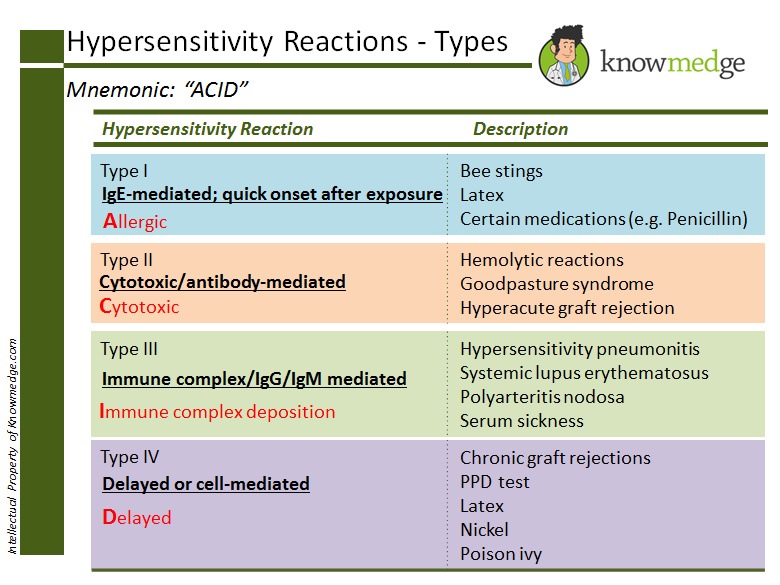Medical Mnemonics: Types of Hypersensitivity Reactions
There are four types of hypersensitivity reactions.
- Type I is IgE-mediated and occurs very quickly after exposure. It is associated with allergens such as bee stings, peanuts, and certain medications, to name a few. This can lead to a life-threatening condition called anaphylaxis.
- Type II hypersensitivity reactions are cytotoxic/antibody-mediated. Some examples in this category are hemolytic reactions, goodpasture syndrome and hyperacute graft rejection.
- Type III is known as immune complex/IgG/IgM mediated and includes certain diagnoses like hypersensitivity pneumonitis, systemic lupus erythematosus, polyarteritis nodosa and serum sickness.
- Type IV is known as delayed or cell-mediated hypersensitivity reaction. Examples include chronic graft rejections, purified protein derivative (PPD), latex, nickel and poison ivy.
A quick mnemonic to use to remember these is ACID:
- Type I – Allergic
- Type II – Cytotoxic
- Type III – Immune complex deposition
- Type IV – Delayed
This is the second in our series of Medical Mnemonics Monday posts. You can all previous and future medical mnemonics here.








